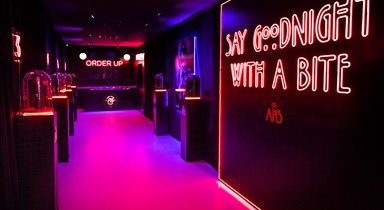How to
How to use email marketing to successfully promote your events
By Stephan Cartello • Jan 22, 2021
When it comes to promoting an event, few channels deliver results like email marketing. Learn how to drive event awareness and increase attendance with your next email marketing campaign.
To plan a successful event, you probably rely on email for outreach. In fact, 40% of marketers believe email is the single-most effective channel for promoting an event. It makes sense: everyone uses email. We check it in the morning, throughout the day and sometime even when we shouldn't be. Plus, there are a variety of email and event marketing software that enable marketers to easily launch massive email campaigns, and EventCartel have it as a built in tool in your organizer toolbox.
For the event marketer who is looking to get the word out on their event, the question then becomes: How do you make it right and stand out?
1. Make your email look great on mobile
Today's world is mobile.
The number of American adults with a smartphone has jumped from 35% in 2011 to 86% in 2020, according to Pew Research. Additional devices, like tablets, are becoming more popular, too, with more than 50% of Americans owning them.
Considering the love for all-things-mobile, it's not surprising to learn that more people rely on their phones for everything from checking their email to RSVPing to an event.
What does that mean for event marketers? There’s nothing worse than missing potential attendees because they can’t read your email. You have to make sure your email looks stunning on every device. Use an email service provider that offers responsive templates, which adapt to fit any screen size. Then, always make sure to preview your email on a mobile device before hitting “send”.
2. Make your email Call To Action clear and bold
The call to action (CTA) in every email—be it an event invitation or a post-event survey—has to "Stand Out".
Remember, subscribers skim through your emails. The average subscriber spends about 11 seconds reading your email. So there is no way that they are reading every word.
To compensate for this, you have to leverage well-defined elements that explain what your email is all about at a glance.
To create a unique call to action, opt for a button rather than a hyperlink. Buttons actually outperform hyperlinks by 33%
You should also make the CTA button a noticeable color, perhaps one that's not used, or barely used, in the email. In addition, keep your CTA copy short and concise. Stick to two or three words, at most, like Learn More, Get Tickets, RSVP.
3. Avoid being flagged as spam
Consumers are redefining what qualifies as spam. Back in the early days of internet, spam was defined as shady messages that sold fake medications or asked people to send money overseas. Spam used to be equated to a scam, but that's not the case today. Today, 36% of spam is advertising.
Why is that? If a subscriber didn't ask for the email or considers the information irrelevant, even at the moment, they could report it as spam which means your email might not even arrive in the rest of your subscribers’ inbox, robbing you of those precious 11 seconds.
You might have the world’s most engaging email marketing campaign—but it won’t matter if no one sees it.
To stay out of the spam folder, make sure you are building a quality list of subscribers, only emailing people who opted-in for your campaign, and keeping your emails relevant and engaging.
Increasing engagement not only leads to greater event ROI, it also tells email providers that you send high-quality content and reduces the likelihood of winding up in the spam folder for your future campaigns.
Ideally, when your audience reads your emails, they’ll want to forward these to their friends. The result is that you’ll be able to increase your subscribers, and ultimately registration, attendance and return for your event.
4. Know your metrics
To make your event email marketing the most effective, you need to pay attention to three key metrics: Your open rate, click-through rate, and unsubscribe rate. On average, event emails tend to perform like this:

Open rate
The open rate is just what you’d guess–the percentage of recipients who open your email. The average event email has a 20% open rate. Festivals and music events usually do slightly better, and professional events perform the lowest. If your email open rate falls below 18 %, rewrite your subject lines and change the sender name.
CTR rate
On average, just under four percent of event email recipients click on a link in that email (known as the click-through rate, or CTR). Music events get the best CTR; classes and workshops the lowest. You can increase your click-through rate by adding more (and more relevant) links placed near the top of your email.
Unsubscribe rate
The average event email has an unsubscribe rate of 1.8 %. That means just under 2% of people who receive event emails unsubscribe from the database. If your rate is above 2 %, increase your targeted sends or ask for feedback in a prompt on your unsubscribe page.
5. Use original and curated content
Creating content like blog articles, infographics, and videos are great event promotion strategies. For example, a blog series could feature stories or insight from a previous event, behind the scenes footage could introduce attendees to the people and work that goes into planning the event. You can also create content that demonstrates the significance of the topic of your upcoming event using EventCartel's robust blogging system available in your organizer's toolbox.
But great content can be time-consuming to make. Fortunately, research suggests consumers equally respond to a healthy combination of both original and curated content. For example, you could utilize content already created by your event’s speakers, artists or notable guests.
When you curate content, just be sure it's up to your quality standards and there are no mentions or links to any competitors.
6. Use strong images to drive engagement
Research shows that 65% of readers in the US prefer image-rich emails. This is great news for promoting your event. Pictures of the location and venue show customers luxury or glamor and help your readers see the value in attending your event.
Meanwhile, including images that show people's faces help engage subscribers by allowing them to see themselves attending your event and the people they’ll meet while there. It’s easy to understand why showing people having the time of their life at the previous event—or an event that’s similar—will encourage subscribers to want to attend the upcoming event. That's why posting a gallery of your previous events on your EventCartel organizer webpage and utilizing it in your marketing emails is such a great idea.
Just make sure the images represent the purpose of the email or content and accurately reflect the event you’re promoting.
7. Know your audience
Knowing your audience is major to sending relevant emails and sending relevant emails is key to driving engagement, thus turning subscribers into attendees.
There are a lot of ways to know your audience, like collecting customer data, conducting surveys, and asking for feedback. Once you know your audience, you can utilize event email segmentation to send only relevant information to the people who are already interested. This will allow you to design more specific emails based on ticket type or a person’s industry or their interests.
In conclusion
Email is just one aspect of event marketing, but it's an important one. Email has the power to reach a large set of contacts, keeping them informed and encouraging them to participate in your events.
Email marketing allows event marketers to:
Reach people where they already are, in their inboxes, and on their mobile devices.
Outline CTAs that drive results.
Create specific and personalized messages that stay out of spam folders.
Focus on building a quality list of subscribers who engage with your content.
Measure your results and implement what you learn, thus improving success on your current campaign as well as in the future.
Using the tips above, you'll be able to nail your next campaign, and see the kind of metrics you want.
Save
Share
Comment


